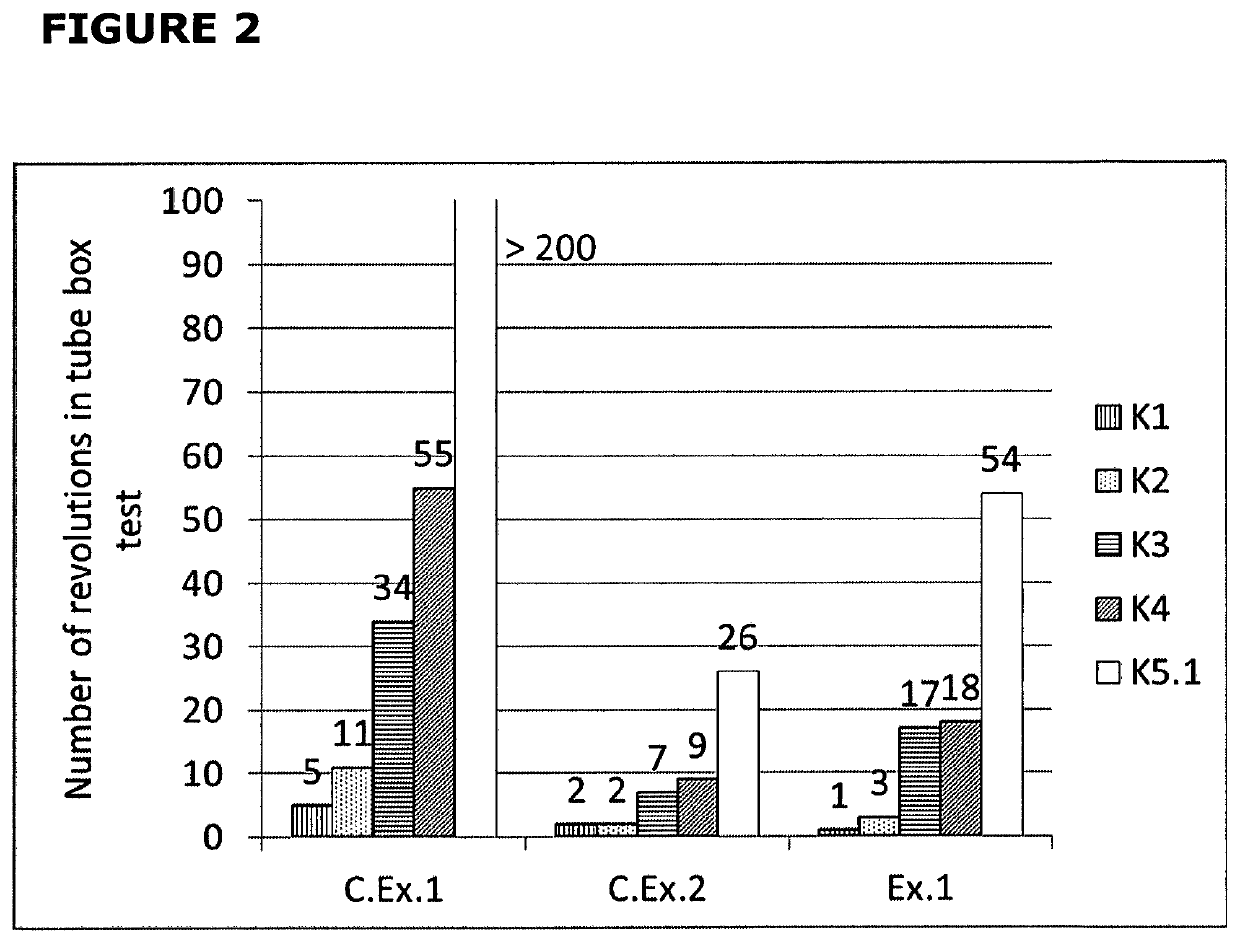Dispersible non-woven fabric and method for producing the same
a non-woven fabric, non-woven technology, applied in special papermaking, textiles and papermaking, papermaking, etc., can solve the problem of inacceptable visual appearance of the resultant fabric, and achieve the effect of avoiding any environmental impact, high strength, and easy decomposition and dispersion in water
- Summary
- Abstract
- Description
- Claims
- Application Information
AI Technical Summary
Benefits of technology
Problems solved by technology
Method used
Image
Examples
example 1 (
Ex. 1)
[0072]80 wt.-% natural pulp fibers (1.3 dtex, 2.8 mm fiber length)
[0073]20 wt. % cellulose fibers (1.7 dtex, 12 mm fiber length)
example 2 (
Ex. 2)
[0074]40 wt.-% natural pulp fibers (2.5 dtex, 3.2 mm fiber length)
[0075]40 wt.-% natural pulp fibers (1.3 dtex, 2.8 mm fiber length)
[0076]20 wt.% cellulose fibers (1.7 dtex, 12 mm fiber length)
[0077]Test for Specific Strength:
[0078]The specific strength of non-woven fabrics in the wet state was calculated according to the following formula:
Specific strength=(MD tensile strength+CD tensile strength) / (2*weight)
[0079]MD tensile strength: tensile strength in machine direction
[0080]CD tensile strength: tensile strength in cross machine direction
[0081]The CD and MD wet tensile strengths were determined using sample strips of the non-woven fabric having a width of 5 cm at a moisture of 200%, similar to the test method described in ISO 9073-3.
[0082]The results for the specific strength are shown in FIG. 1. As it is evident from these results, non-woven fabrics comprising natural pulp fibers, at least a part of which having a fiber coarseness of from 1.0 to 2.0 dtex (Examples 1 and 2),...
PUM
| Property | Measurement | Unit |
|---|---|---|
| length | aaaaa | aaaaa |
| length | aaaaa | aaaaa |
| length | aaaaa | aaaaa |
Abstract
Description
Claims
Application Information
 Login to View More
Login to View More - R&D
- Intellectual Property
- Life Sciences
- Materials
- Tech Scout
- Unparalleled Data Quality
- Higher Quality Content
- 60% Fewer Hallucinations
Browse by: Latest US Patents, China's latest patents, Technical Efficacy Thesaurus, Application Domain, Technology Topic, Popular Technical Reports.
© 2025 PatSnap. All rights reserved.Legal|Privacy policy|Modern Slavery Act Transparency Statement|Sitemap|About US| Contact US: help@patsnap.com


